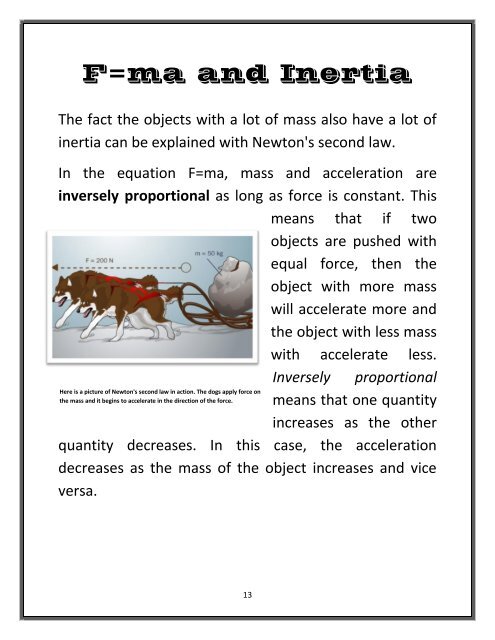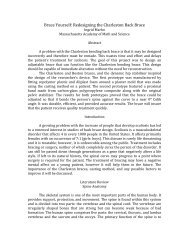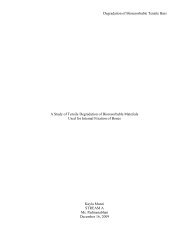The Basics of Newtonian Mechanics - the Scientia Review
The Basics of Newtonian Mechanics - the Scientia Review
The Basics of Newtonian Mechanics - the Scientia Review
You also want an ePaper? Increase the reach of your titles
YUMPU automatically turns print PDFs into web optimized ePapers that Google loves.
F=ma and Inertia<br />
<strong>The</strong> fact <strong>the</strong> objects with a lot <strong>of</strong> mass also have a lot <strong>of</strong><br />
inertia can be explained with Newton's second law.<br />
In <strong>the</strong> equation F=ma, mass and acceleration are<br />
inversely proportional as long as force is constant. This<br />
means that if two<br />
objects are pushed with<br />
equal force, <strong>the</strong>n <strong>the</strong><br />
object with more mass<br />
will accelerate more and<br />
<strong>the</strong> object with less mass<br />
with accelerate less.<br />
Inversely proportional<br />
Here is a picture <strong>of</strong> Newton's second law in action. <strong>The</strong> dogs apply force on<br />
<strong>the</strong> mass and it begins to accelerate in <strong>the</strong> direction <strong>of</strong> <strong>the</strong> force.<br />
means that one quantity<br />
increases as <strong>the</strong> o<strong>the</strong>r<br />
quantity decreases. In this case, <strong>the</strong> acceleration<br />
decreases as <strong>the</strong> mass <strong>of</strong> <strong>the</strong> object increases and vice<br />
versa.<br />
13
















